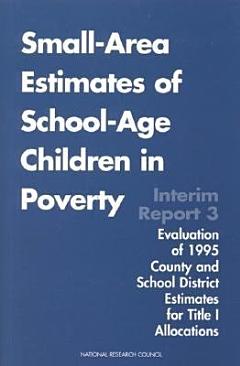The U.S. Department of Education uses estimates of school-age children in poverty to allocate federal funds under Title I of the Elementary and Secondary Education Act for education programs to aid disadvantaged children. Historically, the allocations have been made by a two-stage process: the department's role has been to allocate Title I funds to counties; the states have then distributed these funds to school districts. Until recently, the department has based the county allocations on the numbers and proportions of poor school-age children in each county from the most recent decennial census. States have used several different data sources, such as the decennial census and the National School Lunch Program, to distribute the department's county allocations to districts. In 1994 Congress authorized the Bureau of the Census to provide updated estimates of poor school-age children every 2 years, to begin in 1996 with estimates for counties and in 1998 with estimates for school districts. The Department of Education is to use the school district estimates to allocate Title I basic and concentration grants directly to districts for the 1999-2000 and later school years, unless the Secretaries of Education and Commerce determine that they are "inappropriate or unreliable" on the basis of a study by the National Research Council. That study is being carried out by the Committee on National Statistics' Panel on Estimates of Poverty for Small Geographic Areas.
Interim Report 3

